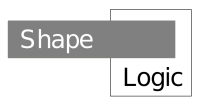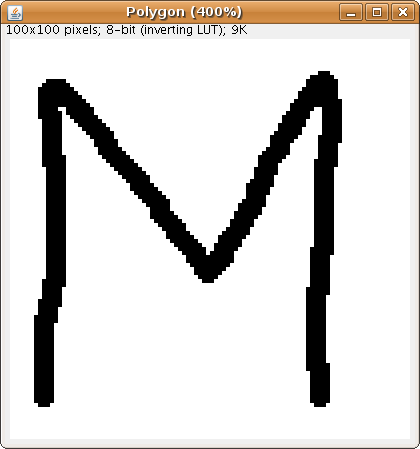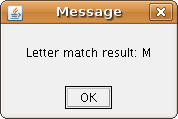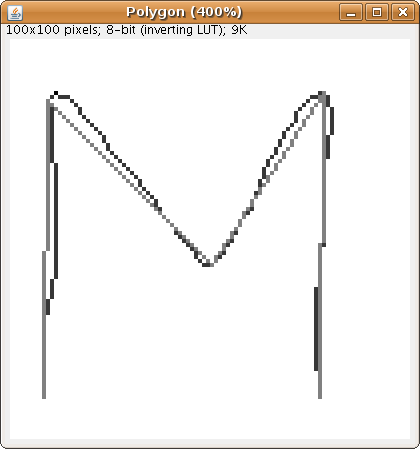
You can use ShapeLogic in different ways:
If you just want to try ShapeLogic as a user this should be very simple. It should probably only take a few minutes after you have ImageJ installed.

Dialog with result of match

Vectorized M with skeletonized letter in black and polygon in gray

If you need a different version of shapelogic_-0.7.jar, say one compiled for JDK 1.5.
These jar file can be found on any Marven 2 repository:
E.g. commons-math-1.1.jar can be found here: http://repo1.maven.org/maven2/commons-math/commons-math/1.1/
Or they can be taken out of the shapelogicplugin0.7.zip
ShapeLogic 0.7 should come with a version that contains all these dependent jars.
When you open ImageJ there will be a ShapeLogic menu with commands in.
You can get the binary distribution from the download page or compile it yourself.
If you need to add you own rules to ShapeLogic you need to add you changes and compile ShapeLogic.
The goal is to separate the databases with the logical rules from the executable jar file, so you do not have to recompile.
ShapeLogic is build using [http://maven.apache.org/ Maven 2].
This makes several build tasks very easy, so this is the recommended way doing builds, but the code should run fine without Maven.
Currently the project is set up to work directly with Eclipse 3.3, Java 1.6, but you can use: NetBeans, IntelliJ, JBuilder, emacs or vi.
Check ShapeLogic out into a local directory.
Do a cd into that directory.
Run:
You will have to change the JDK target in pom.xml:
<build>
<plugins>
<plugin>
<artifactId>maven-compiler-plugin</artifactId>
<configuration>
<source>1.6</source>
<target>1.6</target>
</configuration>
</plugin>
</plugins>
</build>